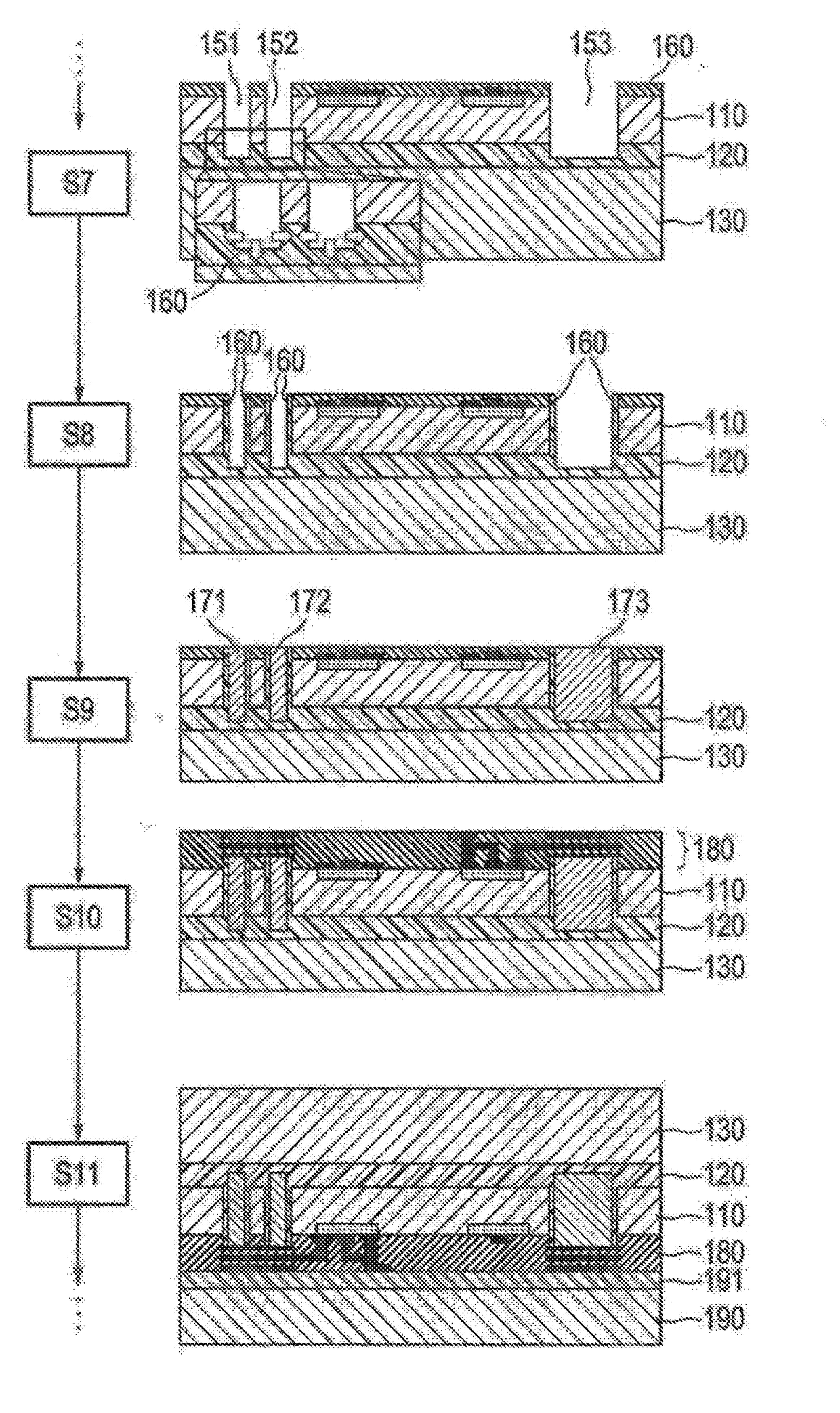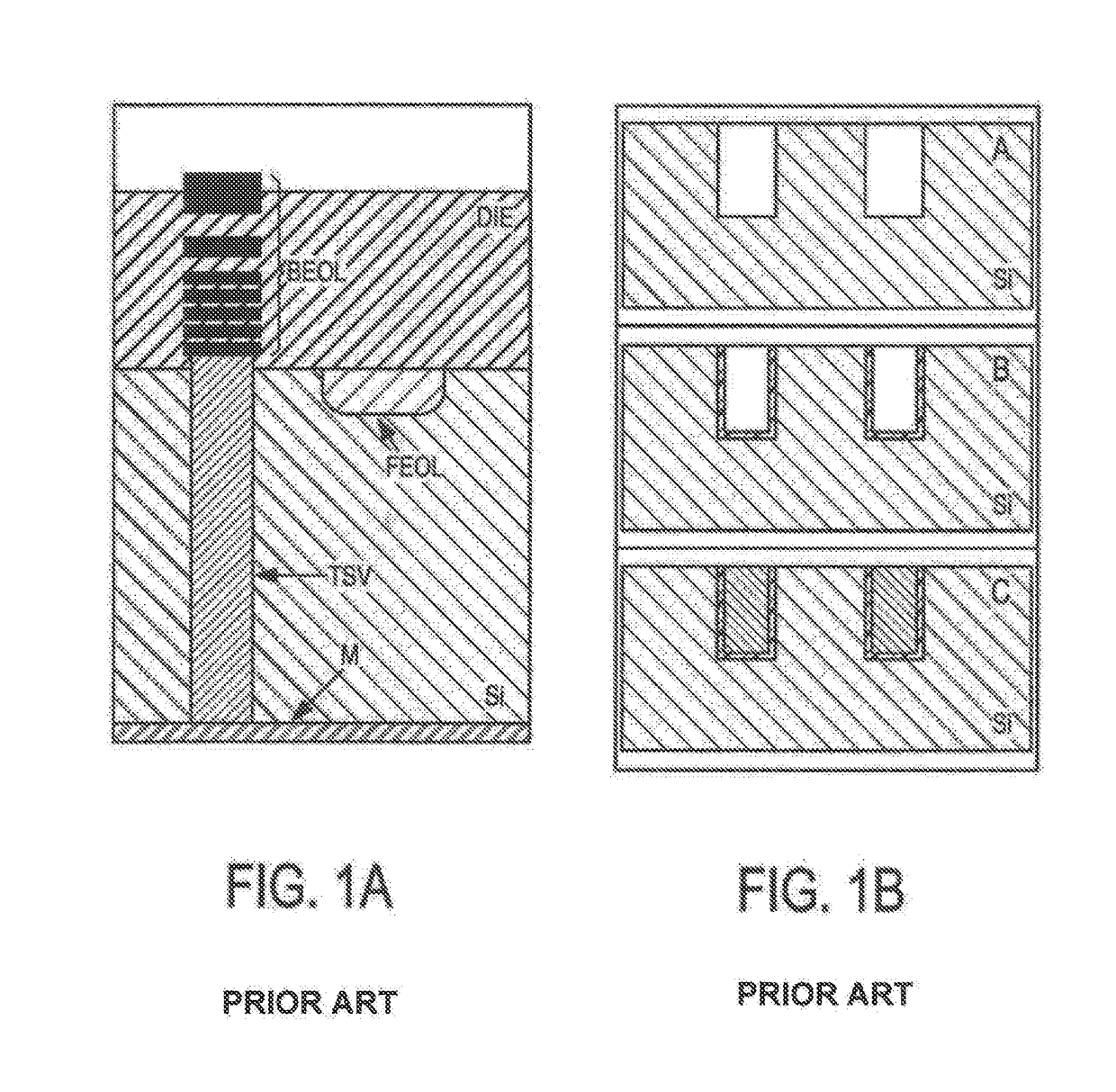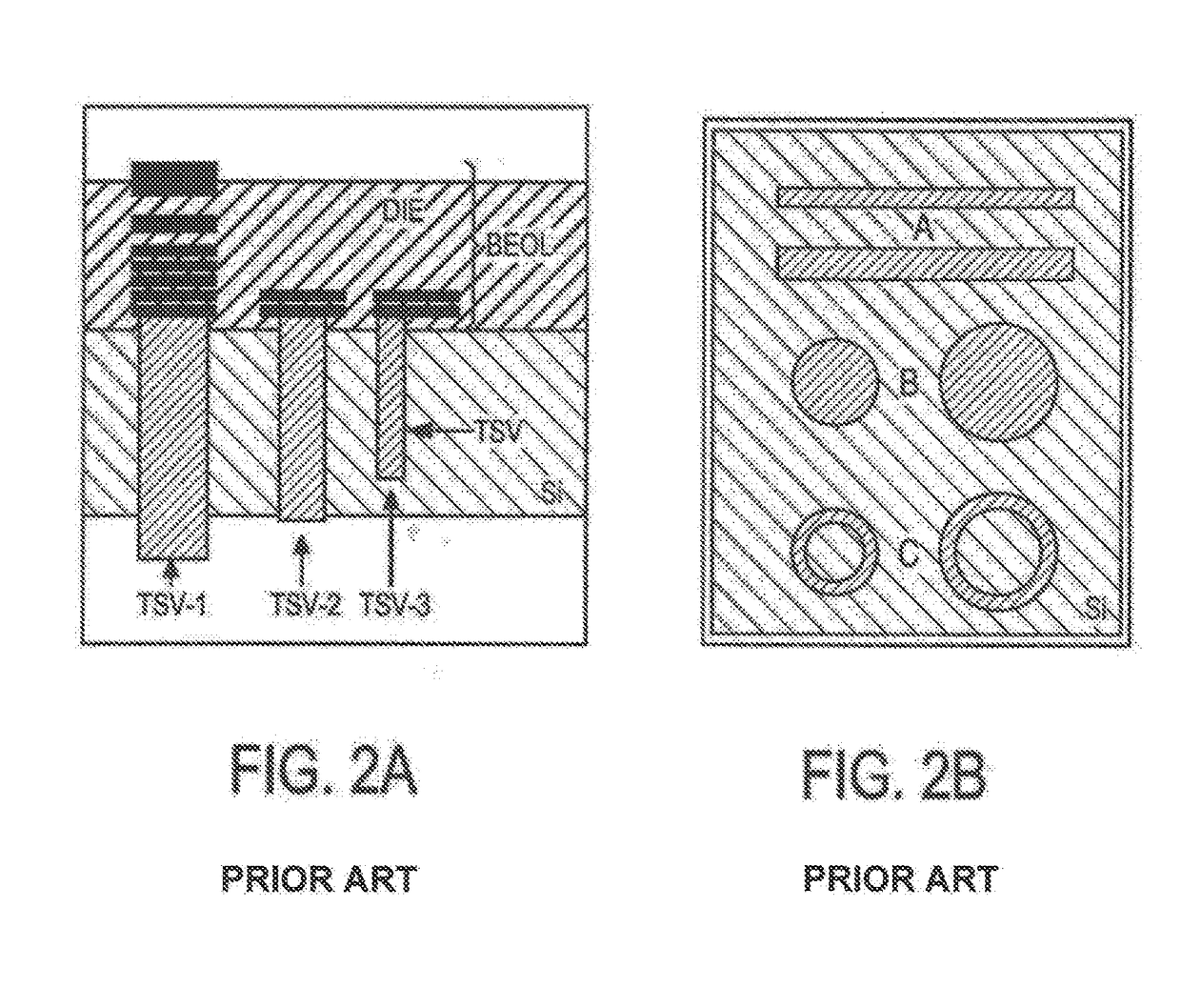Technological method for preventing, by means of buried etch stop layers, the creation of vertical/lateral inhomogeneities when etching through-silicon vias
a technology of throughsilicon vias and etch stop layers, which is applied in the direction of semiconductor devices, semiconductor/solid-state device details, electrical devices, etc., can solve the problems of limited width and depth of the etching process
- Summary
- Abstract
- Description
- Claims
- Application Information
AI Technical Summary
Benefits of technology
Problems solved by technology
Method used
Image
Examples
Embodiment Construction
[0044]Reference has already been made to FIGS. 1A to 2B in the introductory section above.
[0045]FIGS. 3A to 3C show a method for producing a semiconductor device 100 according to the first aspect of the invention. In step S1, a silicon wafer 110 having a plurality of raised portions 101, 102, 103 of equal height h are provided on a first surface 111 of silicon wafer 110. In the further course of the method, raised portions 101, 102, 103 serve as placeholders for through-silicon vias. The cross-sectional geometry of the raised portions is substantially the same as the cross-sectional geometry of the through-silicon vias that ensue. As can be seen clearly in FIG. 3A, the thicknesses of raised portions 101 and 103 differ significantly. In the embodiment shown here, raised portions 101, 102, 103 were produced on an unprocessed silicon wafer by silicon etching. In step S2, an etch stop layer 120 is deposited on the first surface 111 of silicon wafer 110. Etch stop layer 120 is made here ...
PUM
 Login to View More
Login to View More Abstract
Description
Claims
Application Information
 Login to View More
Login to View More - R&D
- Intellectual Property
- Life Sciences
- Materials
- Tech Scout
- Unparalleled Data Quality
- Higher Quality Content
- 60% Fewer Hallucinations
Browse by: Latest US Patents, China's latest patents, Technical Efficacy Thesaurus, Application Domain, Technology Topic, Popular Technical Reports.
© 2025 PatSnap. All rights reserved.Legal|Privacy policy|Modern Slavery Act Transparency Statement|Sitemap|About US| Contact US: help@patsnap.com



